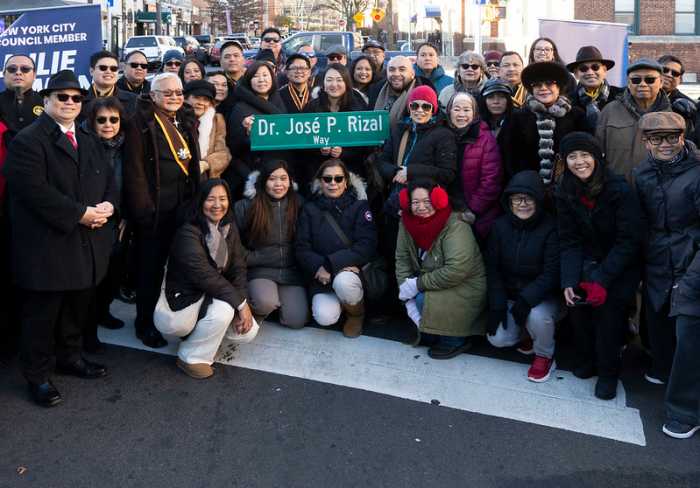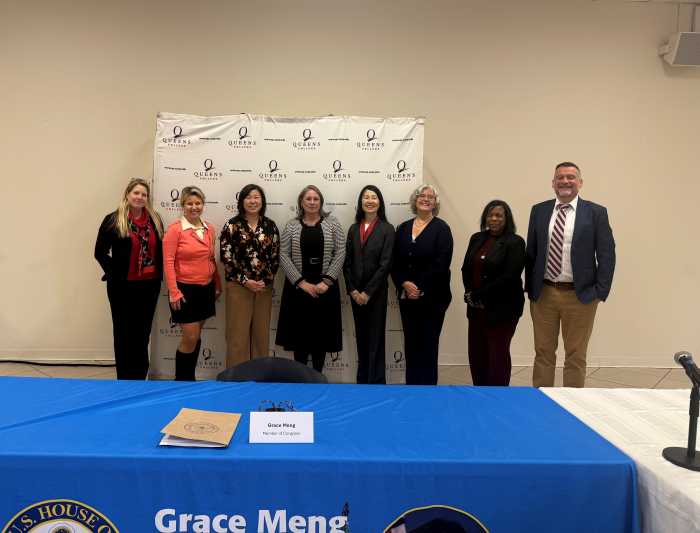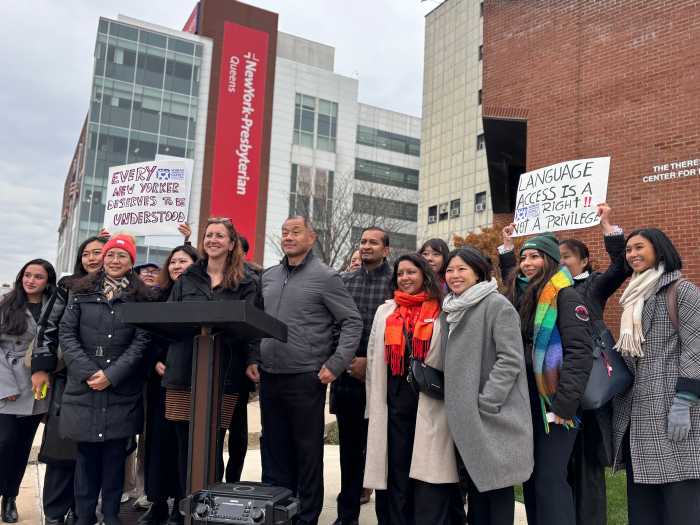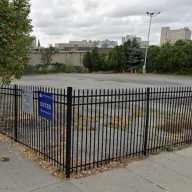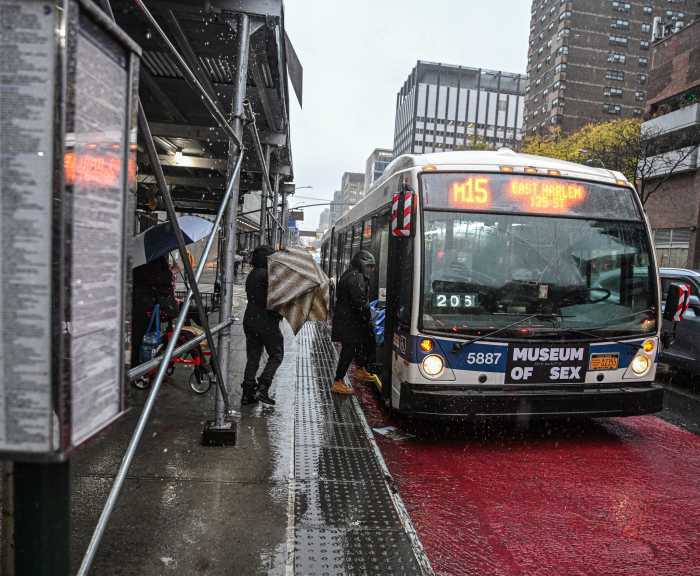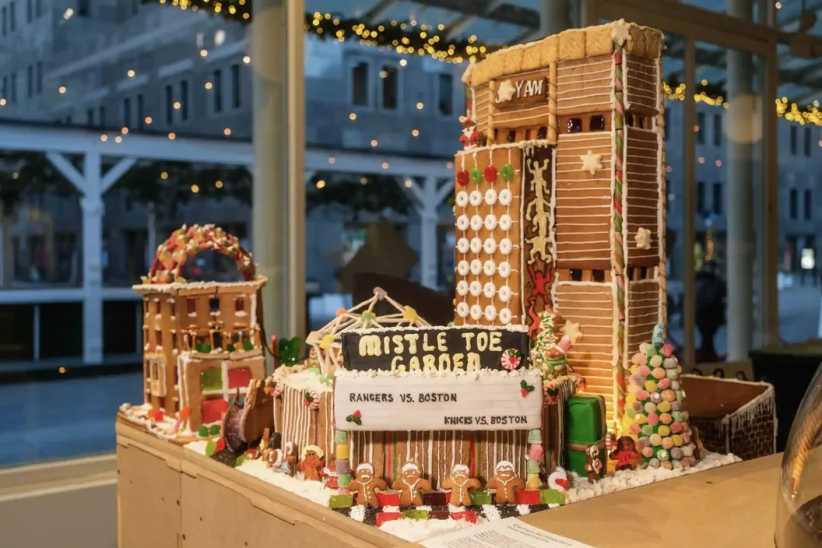By Bill Parry
The long-awaited reconstruction of Queens Boulevard got underway last week. Elected leaders, street-safety activists and Department of Transportation officials joined Mayor Bill de Blasio in the shadow of the Big Six Towers in Woodside “where DOT shovels are now hitting the ground,” according to the mayor.
“Queens Boulevard is tragically legendary. We all became used to the phrase ‘The Boulevard of Death,’” de Blasio said July 23. “Work has begun to turn Queens Boulevard into a “Boulevard of Life”—literally remaking the street—rewriting its future, making it safe for all.”
The city is investing $101 million in the project that will add more crosswalks, protected bike lanes, wider pedestrian islands, expanded medians and reconfigured intersections and reduce speeds on the notorious roadway that has claimed 185 New Yorkers since 1990, most of them pedestrians, according to the city. The first of three phases targets a 1.3-mile stretch between Roosevelt Avenue and 73rd Street.
“This particular stretch, between Roosevelt Avenue and 73rd Street, has had the highest concentration of fatalities from—just from 2009 to 2013, 42 individuals killed or sevely injured just on this one stretch of Queens Boulevard,” de Blasio said. “And this is another astounding figure—591 individuals in that five-year period were injured along this small stretch of Queens Boulevard.”
City Councilwoman Elizabeth Crowley (D-Middle Village), who represents portions of Woodside, called it “the Boulevard of Broken Bones,” while state Assemblyman Michael DenDekker (D-East Elmhurst) recalled his parents refusing to allow him to cross it as a child. The DOT’s original plan was tweaked before passing by unanimous vote by Community Board 2 in June.
“This boulevard is the front yard for so many people that live along it. Big Six residents need to cross here everyday to get to the No. 7 subway,” City Councilman Jimmy Van Bramer (D-Sunnyside) said. “It’s our obligation to make sure no one else dies here. No family should ever suffer the loss of a loved one along this major thoroughfare.”
Soon after the mayor came to Woodside to announce his Vision Zero initiative, in January 2014, U.S. Rep. Joe Crowley (D-Jackson Heights) convened the first Vision Zero town hall meeting in Astoria. Crowley said a close friend from Woodside, 78-year-old Marion Kurshuk, was struck and killed by a motorcyclist while crossing at 58th Street just before Christmas 2013.
“Sadly, too many New Yorkers lost a friend, family member or a neighbor to the hazardous conditions on this major thoroughfare,” Crowley said. Jackson Heights resident Cristina Furlong, a founding member of Make Queens Safer, remembered three cyclist friends, James Langergaard, Evan Blackwell and Alexander Martinez, who were all killed on the boulevard.
Activist Lizi Rahman, who introduced the mayor at the event, lost her 22-year-old son Asif when he bicycled home from work in 2008 and was struck and killed by a truck on the service road at 55th Road.
“After his death our house became silent,” she said. “If there was a bike lane, perhaps my son would still be alive. From that day on I’ve done everything I could to get a bike lane so that no other mother would feel that pain.”
Rahman spent the next eight years writing letters, drafting petitions and working the phone. She said she nearly gave up, “but then de Blasio was elected and I saw the light” at the end of the tunnel.
“Lizi has never shied away from exposing her pain in hopes that people would finally get it,” Furlong said. “Today, we feel blessed that enough people, neighbors got talking, simply talking and then acting to make it happen.”
Reach reporter Bill Parry by e-mail at bparr


